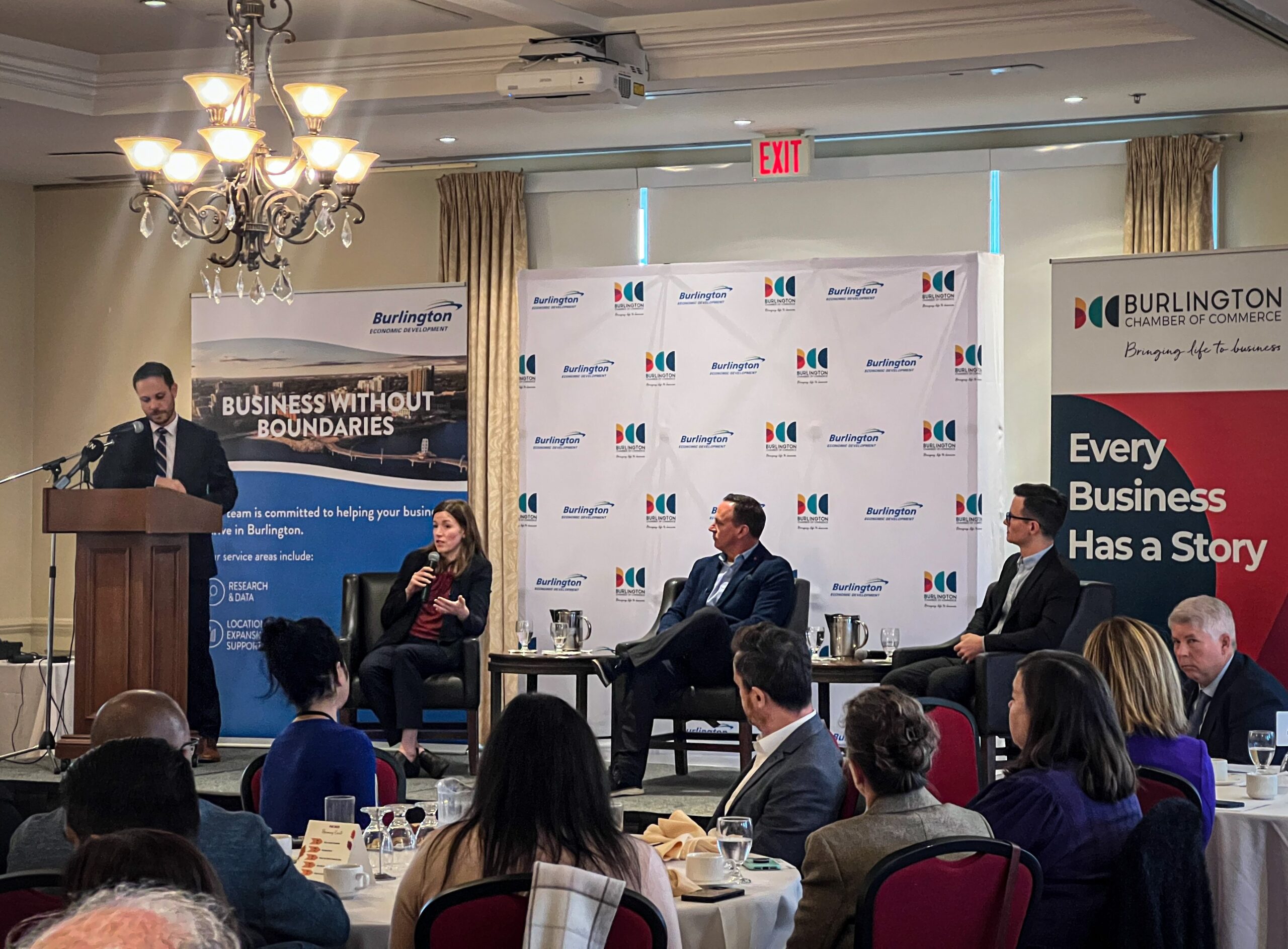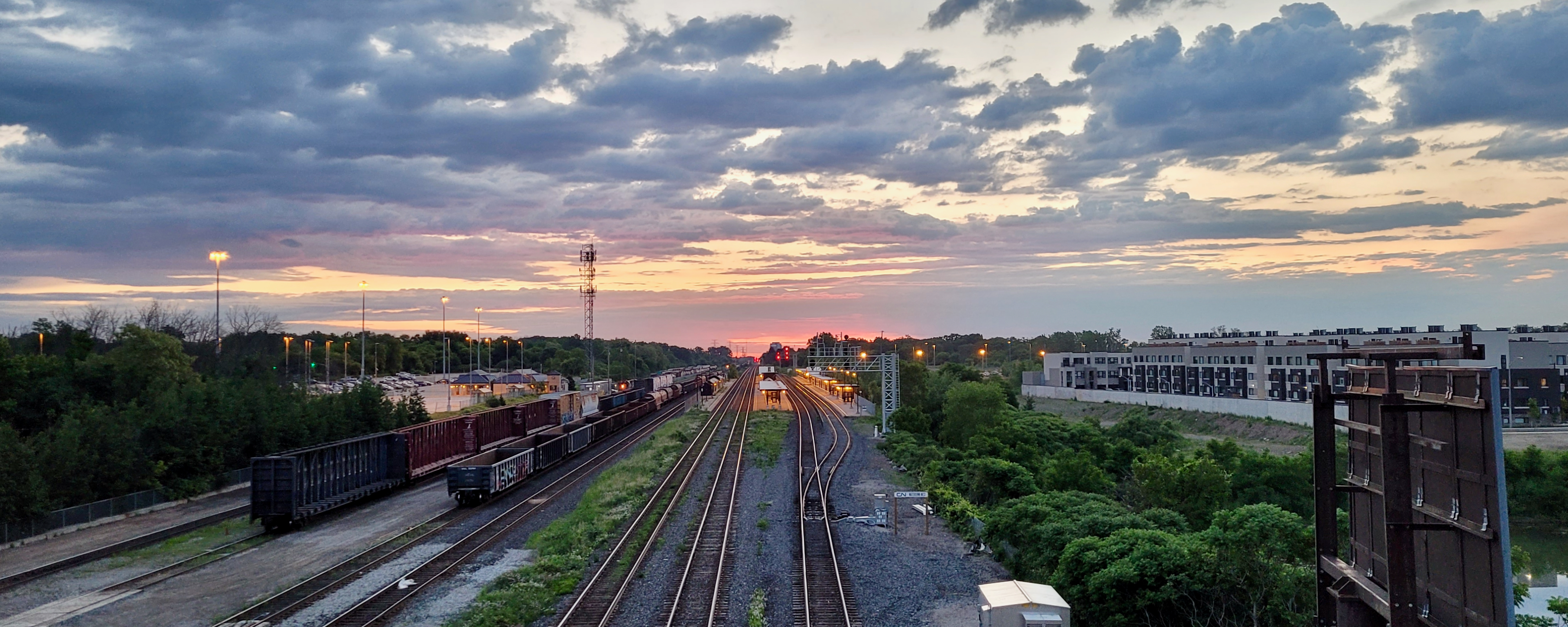Last week was Small Business Week, and it kicked off with the Green Economy Symposium, hosted by the Burlington Chamber of Commerce and Burlington Economic Development.
The event featured a discussion led by Ron Laidman of Enertia Solutions, with panelists Kate Flynn of the Mohawk College Centre for Climate Change Management, Tom Bailey of The Cultivated B, and Wayne Dewitt of Laurel Steel (Nucor).
The panelists participated in an open discussion surrounding the province’s future with regard to the environment, the implications of climate change, and the opportunities presented through electric power. The latter is of particular interest given that the federal government has legislation in place that targets the year 2035 for no further sales of combustion engines, and only electric vehicles (EV) for light-duty vehicles to be made available in the market.
“That, to us, in 2023, might sound really ambitious,” says Flynn, “but it’s actually not that ambitious in terms of the global targets. We’re seeing a lot of EV uptake, especially in the European and Chinese markets, as well as the United States, and we have really hit the tipping point where that’s now becoming a lot more common. We’re also seeing large automotive manufacturers really start to double down on their EV production.”
Flynn goes on to say that last year in Canada, approximately 8% of the new vehicles sold were EV, and when comparing that to Norway, which has a similar environment to Canada, 89% of new vehicles sold last year were EV. Quite a drastic difference.
With automotive manufacturers making changes to their production lines to support EV manufacturing, they are also looking for ways to clean up their supply chains. For example, automotive manufacturers are putting in advanced contracts to purchase green steel, as opposed to purchasing steel that is very carbon-intensive.
While this may be optimistic, there still is a need for improved infrastructure to support these electric initiatives. This is especially true when we look to consider the electrical needs for our own homes, not to mention the addition of a charging station to charge an electric vehicle at every single house. This may, however, present an economic opportunity to build the infrastructure that is needed, and a unique opportunity for Ontario to lead in this industry.
Flynn mentions that BurlingtonGreen has a great campaign called “Make the Switch,” which provides extensive information about electric vehicles for those considering one for their household.
Laurel Steel (Nucor), a supply chain partner, supplies automotive manufacturers with the raw materials for manufacturing, and they are actively receiving letters of intent to ensure that there is a directive for EVs in the future, says Dewitt, which is indicative of a transition in the market as we approach that federal target of 2035 for the elimination of combustion engines. At the corporate level, Nucor’s mandate is to reduce greenhouse gases, but they are also committed to a 35% reduction of greenhouse gas emissions by 2030.
“This is not just corporate messaging. The automotive companies are taking this incredibly seriously,” says Bailey, which suggests that every facet of the process in itself is being explored to ensure that changes are positive, meaningful, and as green as possible.

Following the panel discussion, the Honourable Nina Tangri, Ontario’s current Associate Minister of Housing, and former Associate Minister of Small Business and Red Tape Reduction, was featured as the guest speaker. She shared how the provincial government continues to connect with small businesses and entrepreneurs.
Cutting red tape, for example, is a massive initiative. Over $933 million dollars have been saved for businesses, not-for-profit organizations, and the broader public sector in gross annual regulatory compliance costs, providing an opportunity for these savings to be reinvested back into the organizations themselves, according to Tangri.
“Everything that we’re doing is helping job creators to have the best possible conditions to succeed, especially now,” says Tangri. “We can’t deny the global economic uncertainty and inflationary pressures that people and businesses are feeling. That’s why our government is focused on building a strong and resilient economy that creates good jobs.”
Tangri makes her point clear: when communities prosper, Ontario prospers.
“The world has taken notice that Ontario is a great place to invest,” says Tangri, noting that Ontario is a powerhouse for manufacturing and innovation, attracting global organizations to invest in the province across a wide range of sectors. In fact, says Tangri, these investments include $26 billion dollars in auto and electric vehicles, $13.9 billion dollars in tech, and $3 billion dollars in life sciences.
These efforts are evidently paying off — job creators have helped to add more than 700,000 jobs to the economy since her taking office in 2018, says Tangri.
These opportunities are not limited to large-scale businesses only. Small businesses represent 98% of all businesses in the province, and employ approximately 2.4 million people, according to Tangri.
The same sentiment continued to be echoed throughout the event: leave no stone unturned, and let’s make Ontario the number one place to invest and do business. Through government incentives, global investments, and talent, businesses can thrive while implementing innovative strategies to move towards a greener economy.
The Green Economy Symposium was held on October 16, 2023, at the Burlington Golf and Country Club.





